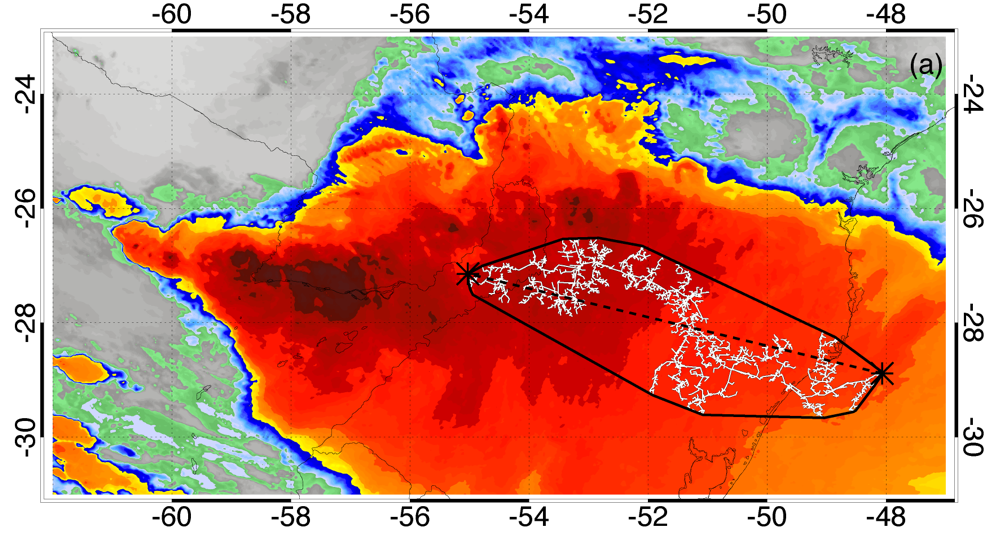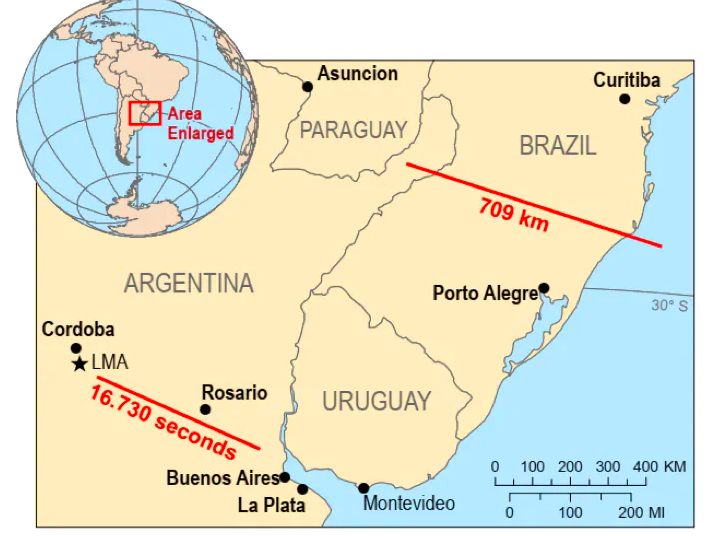The largest lightning bolt in recorded history happened on October 31, 2018 in southern Brazil, although the flash stretched from eastern Argentina all the way to the Atlantic, the World Meteorological Organization (WHO), a United Nations agency, said. The discharge, which stretched over 700 km, is equivalent to the distance between Boston and Washington DC.

But this wasn’t the single record that was certified. The WMO’s group of experts on weather and climate extremes also reported another record for the longest lightning flash over northern Argentina. The single flash lasted for a total of 16,73 seconds and, like the one in Brazil, also spanned through several hundred kilometers.
The new records were more than double the previously known record-holders, the WHO said in a statement. The previous record for duration was of 7.74 seconds, measured on August 30, 2012, in southern France. Meanwhile, the previous record for length was 321 kilometers (199 miles) and was registered in Oklahoma on June 20, 2007.
The new measurements reveal “extraordinary records from single lightning flash events,” Randall Cerveny, the chief rapporteur in the WMO expert committee, said in a statement. “It is likely that even greater extremes still exist, and that we will be able to observe them as lightning detection technology improves,” he said.
The previous records were registered using data obtained by so-called ground-based lightning mapping array networks, which WMO experts claim have upper limits in the scale of lightning that can be observed. But recent advances in space-based lighting mapping now allow researchers to measure flash extent and duration much better.

This has allowed for the detection of “previously unobserved extremes in lightning occurrence, known as ‘megaflashes’,” Michael Peterson, of the Space and Remote Sensing Group of Los Alamos National Laboratory in the US, said in a statement. Megaflashes “are defined as horizontal mesoscale lightning discharges that reach hundreds of kilometers in length,” he said.
For years, lightning was understood as a local event, resulting from an imbalance of electrical charge. But new research by WMO experts recently showed that some lightning events can be “mesoscale” in nature, reaching the scale of the occasionally massive sprawling storm complexes that create them.
Lightning is indeed a major hazard that claims many lives every year. For example, in the United States, lightning strikes kill on average 48 people per year, also injuring hundreds. Although most lightning occurs in the summer, people can be struck at any time of year. The most people killed by a single strike of lightning were 21 people in Zimbabwe in 1975.
Low-latitude areas experience far more lightning than higher-latitude areas, a study showed in 2017. Tropical regions can get hit by lightning strikes year-round whereas northern latitudes experience lightning only half that time. One square kilometer of Lake Maracaibo receives 233 flashes of lightning each year, more than any other place on Earth
The findings highlighted important public lightning safety concerns for electrified clouds where flashes can travel extremely large distances. The WHO advises to follow the 30-30 rule – if the time between flash and thunder is less than 30 seconds, go inside and wait 30 minutes after the last observed flash to resume outdoor activities.









